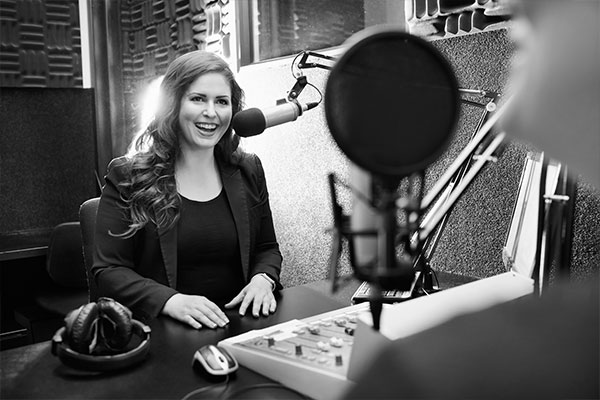Personality Disorders: Overview

Personality refers to a distinctive set of traits, behavior styles, and patterns that make up our character or individuality. How we perceive the world, our attitudes, thoughts, and feelings are all part of our personality. People with healthy personalities are able to cope with normal stresses and have no trouble forming relationships with family, friends, and co-workers.
What is a Personality Disorder?
Those who struggle with a personality disorder have great difficulty dealing with other people. They tend to be inflexible, rigid, and unable to respond to the changes and demands of life. Although they feel that their behavior patterns are “normal” or “right,” people with personality disorders tend to have a narrow view of the world and find it difficult to participate in social activities.
Recognizing a Personality Disorder
A personality disorder must fulfill several criteria. A deeply ingrained, inflexible pattern of relating, perceiving, and thinking serious enough to cause distress or impaired functioning is a personality disorder. Personality disorders are usually recognizable by adolescence or earlier, continue throughout adulthood, and become less obvious throughout middle age.
What Causes a Personality Disorder?
Some experts believe that events occurring in early childhood exert a powerful influence upon behavior later in life. Others indicate that people are genetically predisposed to personality disorders. In some cases, however, environmental facts may cause a person who is already genetically vulnerable to develop a personality disorder.
Types of Personality Disorders
There are many formally identified personality disorders, each with their own set of behaviors and symptoms. Many of these fall into three different categories or clusters:
- Cluster A: Odd or eccentric behavior
- Cluster B: Dramatic, emotional or erratic behavior
- Cluster C: Anxious fearful behavior
Since there are too many identified types of personality disorders to explain in this context, we will only review a few in each cluster.
Cluster A:
- Schizoid Personality Disorder. Schizoid personalities are introverted, withdrawn, solitary, emotionally cold, and distant. They are often absorbed with their own thoughts and feelings and are fearful of closeness and intimacy with others. For example, a person suffering from schizoid personality is more of a daydreamer than a practical action taker.
- Paranoid Personality Disorder. The essential feature for this type of personality disorder is interpreting the actions of others as deliberately threatening or demeaning. People with paranoid personality disorder are untrusting, unforgiving, and prone to angry or aggressive outbursts without justification because they perceive others as unfaithful, disloyal, condescending or deceitful. This type of person may also be jealous, guarded, secretive, and scheming, and may appear to be emotionally “cold” or excessively serious.
- Schizotypal Personality Disorder. A pattern of peculiarities best describes those with schizotypal personality disorder. People may have odd or eccentric manners of speaking or dressing. Strange, outlandish or paranoid beliefs and thoughts are common. People with schizotypal personality disorder have difficulties forming relationships and experience extreme anxiety in social situations. They may react inappropriately or not react at all during a conversation or they may talk to themselves. They also display signs of “magical thinking” by saying they can see into the future or read other people’s minds.
Cluster B:
- Antisocial Personality Disorder. People with antisocial personality disorder characteristically act out their conflicts and ignore normal rules of social behavior. These individuals are impulsive, irresponsible, and callous. Typically, the antisocial personality has a history of legal difficulties, belligerent and irresponsible behavior, aggressive and even violent relationships. They show no respect for other people and feel no remorse about the effects of their behavior on others. These people ware at high risk for substance abuse, especially alcoholism, since it helps them to relieve tension, irritability and boredom.
- Borderline Personality Disorder. People with borderline personality disorder are unstable in several areas, including interpersonal relationships, behavior, mood, and self-image. Abrupt and extreme mood changes, stormy interpersonal relationships, an unstable and fluctuating self-image, unpredictable and self-destructive actions characterize the person with borderline personality disorder. These individuals generally have great difficulty with their own sense of identity. They often experience the world in extremes, viewing others as either “all good” or “all bad.” A person with borderline personality may form an intense personal attachment with someone only to quickly dissolve it over a perceived slight. Fears of abandonment may lead to an excessive dependency on others. Self-multilation or recurrent suicidal gestures may be used to get attention or manipulate others. Impulsive actions, chronic feelings of boredom or emptiness, and bouts of intense inappropriate anger are other traits of this disorder, which is more common among females.
- Narcissistic Personality Disorder. People with narcissistic personality have an exaggerated sense of self-importance, are absorbed by fantasies of unlimited success, and seek constant attention. The narcissistic personality is oversensitive to failure and often complains of multiple somatic symptoms. Prone to extreme mood swings between self-admiration and insecurity, these people tend to exploit interpersonal relationships.
Cluster C:
- Avoidant Personality Disorder. Avoidant personalities are often hypersensitive to rejection and are unwilling to become involved with others unless they are sure of being liked. Excessive social discomfort, timidity, fear of criticism, avoidance of social or work activities that involve interpersonal contact are characteristic of the avoidant personality. They are fearful of saying something considered foolish by others; worry they will blush or cry in front of others; and are very hurt by any disapproval by others. People with avoidant personality disorder may have no close relationships outside of their family circle, although they would like to, and are upset at their inability to relate well to others.
- Dependent Personality Disorder. People with dependent personality disorder may exhibit a pattern of dependent and submissive behavior, relying on others to make decisions for them. They require excessive reassurance and advice, and are easily hurt by criticism or disapproval. They feel uncomfortable and helpless if they are alone, and can be devastated when a close relationship ends. They have a strong fear of rejection. Typically lacking in self-confidence, the dependent personality rarely initiates projects or does things independently. This disorder usually begins by early adulthood and is diagnosed more frequently in females than males.
- Obsessive-Compulsive Personality Disorder. Compulsive personalities are conscientious and have high levels of aspiration, but they also strive for perfection. Never satisfied with their achievements, people with compulsive personality disorder take on more and more responsibilities. They are reliable, dependable, orderly, and methodical, but their inflexibility often makes them incapable of adapting to changed circumstances. People with compulsive personality are highly cautious, weigh all aspects of a problem, and pay attention to every detail, making it difficult for them to make decisions and complete tasks. When their feelings are not under strict control, events are unpredictable, or they must rely on others, compulsive personalities often feel a sense of isolation and helplessness.
Professional Help
When these characteristics are carried to an extreme, when they endure over time and when they interfere with healthy functioning, a diagnostic evaluation with a licensed physician or mental health professional is recommended.
Treatment of the Personality Disorder
There are many types of help available for the different personality disorders. Treatment may include individual, group, or family psychotherapy. Medications, prescribed by a patient’s physician, may also be helpful in relieving some of the symptoms of personality disorders, including problems with anxiety and perceptions.
Psychotherapy for patients with personality disorders focuses on helping them see the unconscious conflicts that are contributing to or causing their symptoms. It also helps people become more flexible and is aimed at reducing the behavior patterns that interfere with everyday living.
In psychotherapy, people with personality disorders can better recognize the effects of their behavior on others. Behavior and cognitive therapies focus on resolving symptoms or traits that are characteristic of the disorder, such as the inability to make important life decisions or the inability to initiate relationships.
There is Hope
The more you learn about personality disorders the more you will understand that they are illnesses, with causes and treatments. People can improve with proper care. By seeking out information you can recognize the signs and symptoms of a personality disorder and help yourself or someone you know live a healthier more fulfilling life.






















